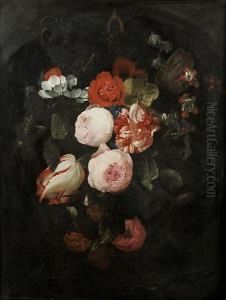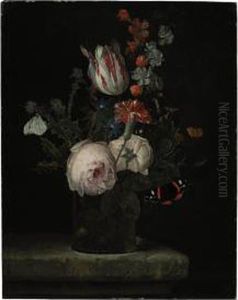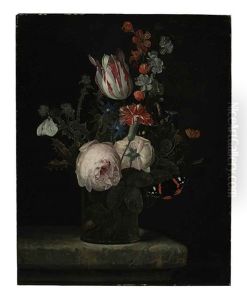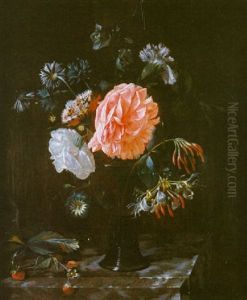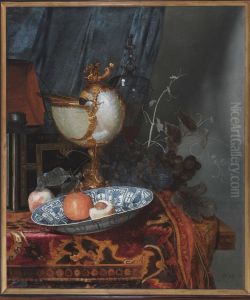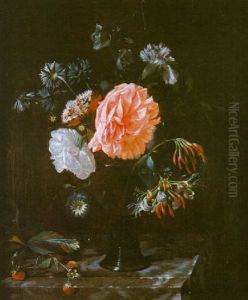Adriaen Van Der Spelt Paintings
Adriaen van der Spelt was a Dutch Golden Age painter known primarily for his still lifes and flower paintings. Born in 1630 in Leiden, Netherlands, van der Spelt was part of a period in Dutch art that celebrated detailed realism and rich symbolism. His work often featured a combination of flowers, fruits, and sometimes insects or shells, which were popular subjects in Dutch still life paintings of the time.
Van der Spelt's paintings are characterized by their intricate detail and vivid coloration. He was particularly adept at capturing the texture and delicacy of flower petals, which added a sense of depth and realism to his work. His arrangements were typically set against a dark background, a common style that helped to highlight the luminosity of the subject matter.
Little is known about van der Spelt's life and training, but it is believed that he was a pupil of the still life painter Jan Davidsz. de Heem, who was a prominent figure in the field. Van der Spelt's works show a clear influence from de Heem's style, particularly in the meticulous attention to detail and composition. However, van der Spelt managed to develop his own distinctive approach to the genre.
Throughout his career, van der Spelt produced a relatively small but fine body of work. His paintings were collected by connoisseurs and art lovers during his lifetime, and his contribution to the Dutch still life genre has been acknowledged by art historians. Despite his talent, he did not achieve the same level of fame as some of his contemporaries.
Adriaen van der Spelt died in 1673. Today, his works can be found in various art museums and private collections, where they continue to be appreciated for their beauty and technical skill. His legacy as part of the Dutch Golden Age of painting endures, and his works are studied for their contribution to the development of still life painting in Europe.
